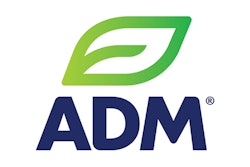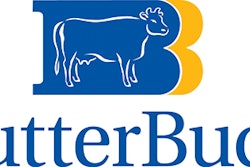
As pet food becomes increasingly specialized, with manufacturers catering to consumers’ desires to meet the individual needs of their pets, functional ingredients are becoming more of a trend than ever. “High omega” pet food formulas, for example, are purchased by 14% of dog owners and 10% of cat owners in the US, according to a March 2016 Packaged Facts report, Pet food in the US. Roughly 11% of dog owners and 8% of cat owners purchase foods with “high antioxidant” claims, while 7% of dog owners and 6% of cat owners look for foods with probiotics/prebiotics. According to another March 2016 Packaged Facts report, Senior, weight management and special needs pet products in the US, second edition, the company estimated that US retail sales of senior, weight management and special needs pet products neared US$3.8 billion in 2015.
The increased use of functional pet food ingredients is a natural expansion of similar human food trends, according to Juan Gomez-Basauri, PhD, global director for companion animal nutrition with Alltech. "The same health-conscious Boomers and Millennials are driving the need for new innovative nutritional solutions for their beloved companion animals," said Gomez-Basauri. "As pet parents age, so do their pets, and we then see the same functional ingredients, like probiotics (Lactobacillus bacteria), prebiotic fibers (beta-glucans, manna oligosaccharides), nucleotides and omega-3 fatty acids (algae-sourced), applied to pet foods."
“Micro-targeted and ‘functional’ pet foods—weight-related, age-related, breed-specific, condition-specific, etc.—will keep growing at an above-average clip in the near-term,” said Packaged Facts. “Echoing trends in human foods, specialized pet foods offer whole food and/or nutraceutical ingredients, such as probiotics, omega fatty acids, glucosamine, fruits and vegetables.”
Even pet treats are seeing action in the functional game: among dog treat purchasers, according to Packaged Facts data, joint mobility treats are used by the greatest percentage of owners, at 12%, followed by heart health (9%) and brain health (8%). Among cat treat purchasers, heart health and brain health come in at 11% each, followed by joint mobility treats at 9%. Senior- and weight-specific treats are each used by 4% of dog owners, and by 6% and 4% of cat owners, respectively.
With such a wide range of options for catering to the need for functional ingredients in pet foods, how is the industry taking advantage of such an opportunity? Companies are individualizing their efforts, playing to their strengths and choosing ingredients that will best contribute to a complex market. ADM, for example, is focusing on “the international year of pulses,” a trending topic in both the pet food and consumer markets, according to company experts. Beans and pulses are high in dietary fiber, iron, potassium and magnesium, providing them with diverse potential ingredient applications.
“Beans are a very recognizable whole food ingredient,” said Jolene Hoke, ADM companion animal technical specialist. “Consumers are looking for fewer ingredients and clean labels in their pet food, and beans are a good source of both protein and fiber. Often we need to make a complementary protein, so we see beans paired with other on-trend ingredients like ancient grains. Edible beans are also used in weight management. With obesity being a large issue for pets today, weight management through foods like edible beans can be beneficial.”
With protein content in pet foods an increasing talking point among consumers, other companies are also taking advantage, ensuring that their customers have options when it comes to formulating with this trend in mind. International Dehydrated Foods Inc. (IDF) has a 72% chicken protein and a newly developed 85% protein for companies needing a boost in their formulas, according to Marketing Communications Manager Erin Danastasio. The company also focuses on its chicken fat, used for shelf stability. “Our chicken fat is minimally processed so it’s the freshest available, shelf stable and preferred over commercial rendered fats in recent palatability tests,” said Danastasio.

IDF offers a 72% chicken protein and a newly developed 85% protein for companies needing a boost in their formulas. | Courtesy International Dehydrated Foods Inc.
Kemin offers an alternative source for formulas needing a protein boost. “Hydrolysis is the process of breaking down large molecular weight proteins into smaller molecular weight components,” said the company. “While hydrolysis is used to enhance flavor, highly hydrolyzed proteins that weigh less than 10 kDa have the added benefit of being only weakly immunogenic, making them a quality protein source for low allergen petfood diets. Kemin provides their customers with spray-dried chicken liver hydrolysate as a cost-effective way to achieve a low molecular weight profile.”
Pet health is a good throughway for functional ingredients, as companies tackle various aspects of the larger trend. FutureCeuticals, a sister company of Van Drunen Farms, offers FruiteX-B, a nature-identical plant-mineral complex that focuses on pet joint health. According to the company, Fruite-X has been shown to reduce inflammatory markers in both dogs and humans, reducing joint discomfort and increasing mobility. FutureCeuticals also has an ingredient that caters to cognitive health, NeuroFactor. It’s an extract of the whole coffee fruit that has been shown to stimulate the body to produce higher levels of the neuroprotein BDNF (Brain Derived Neurotrophic Factor), associated with mood and overall cognitive health.
Alltech is also working in the areas of pet health. "Beta-glucans are widely distributed in nature and one of the most important sources is derived from yeast," said Gomez-Basauri. "Beta-glucans are reported to have immune-stimulatory, anti-inflammatory, antimicrobial and anti-tumor properties, as well as cholesterol-lowering activity. Dietary nucleotides play a role in the immune response and improve gut morphology. Omega-3 fatty acids (algae-sourced) is a new market offering that addresses sustainability. With the global population expected to hit 10 billion in 2050, algae can be used as a vector to express a number of essential nutrients. Nowadays specific strains of algae expressing high amounts of DHA are already in the market; in the near future, we will see other strains expressing different fatty acids, vitamins , glucosamine, phenolic compounds and antioxidants, as well as other functional ingredients."
Arcadia Biosciences Inc. has developed SONOVA GLA (gamma-linolenic acid) safflower oil, which supports skin and coat health, the immune system, weight control, and bone and joint health. The omega-6 fatty acid contains a minimum of 40% GLA, and is pending US Food and Drug Administration (FDA) approval as a food additive ingredient for dog food. Once approved, according to the company, it will be the only FDA-approved source of GLA that can be added to pet food formulas as a source of omega-6.
Butter Buds Inc. focuses on helping its customers improve palatability, mask off flavors, improve aroma performance, enhance topical applications and reduce ingredient costs with functional dairy and other ingredients. “Pet food and treat consumers demand more than great taste for their pets,” said Mike Luehne, senior regional sales manager and trainer for Butter Buds. “They seek products that will offer their pet health and wellness benefits, increased liveliness, and vitamin and mineral enrichment. The functionality of Butter Buds ingredients are specialized in that they help pet food formulators conquer the taste of strong active food ingredients by providing masking and mouthfeel properties that will help diminish off-notes in a variety of pet related supplements, treats and food.”
IsoNova Technologies is also familiar with this use of functional ingredients, particularly the use of egg-based ingredients. "A key factor in functional product performance (besides flavors, aromas and colors) is texture and physical appearance," said Ingmar Middelbos, senior technical services manager for IsoNova. "Eggs have been used in these types of applications for hundreds of years—they have a neutral flavor, but are very powerful binders that give pet foods the desired consistency to contribute the perfect eating experience for the pet. Egg whites can be used, but there are more pet food-specific solutions available, such as (IsoNova's) OvaBind 80, which combines the gelling ability of egg whites with economics that work for the pet food industry."
As pet food formulations continue to specialize in order to meet consumer demand, functional pet food ingredients will continue to play an important role in the process—and innovation, as always, will be the key.
More on functional pet food ingredients
Greg Aldrich, PhD: www.petfoodindustry.com/authors/1
Pet food market trends: www.petfoodindustry.com/topics/222
Pet food nutrition: www.petfoodindustry.com/topics/306


















